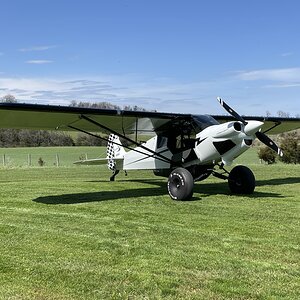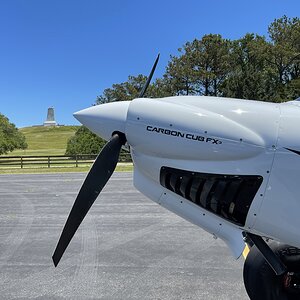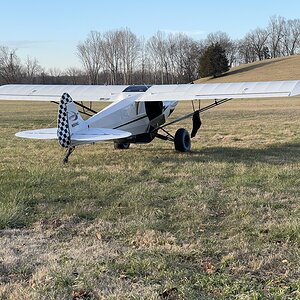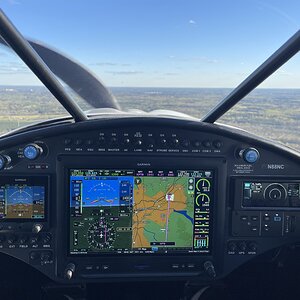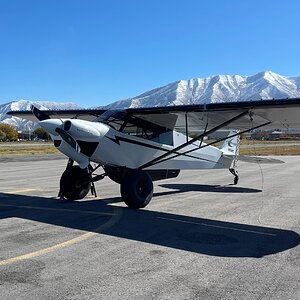Navigation
Install the app
How to install the app on iOS
Follow along with the video below to see how to install our site as a web app on your home screen.
Note: This feature may not be available in some browsers.
More options
Welcome to Flightinfo.com
- Register now and join the discussion
- Friendliest aviation Ccmmunity on the web
- Modern site for PC's, Phones, Tablets - no 3rd party apps required
- Ask questions, help others, promote aviation
- Share the passion for aviation
- Invite everyone to Flightinfo.com and let's have fun
You are using an out of date browser. It may not display this or other websites correctly.
You should upgrade or use an alternative browser.
You should upgrade or use an alternative browser.
Lowest cloud in a system?
- Thread starter JohnnyP
- Start date
- Watchers 5
Johnny,
What cloud "group" are you talking about?
-----Are you asking about the 4 "families" of clouds from the Aviation Weather AC 00-6A?
"What is a cum-stratus cloud?"
--- Is this a Cirrocumulus, Cirrostratus, or Stratocumulus cloud?
I wonder if I should ask "What have you been smoking?" but don't tell me, I really do not want to know.
JAFI
What cloud "group" are you talking about?
-----Are you asking about the 4 "families" of clouds from the Aviation Weather AC 00-6A?
"What is a cum-stratus cloud?"
--- Is this a Cirrocumulus, Cirrostratus, or Stratocumulus cloud?
I wonder if I should ask "What have you been smoking?" but don't tell me, I really do not want to know.
JAFI
Johnny,
The question lacks adequate information. Rotors and lenticular formations are generally found in conditions not conducive to the formation of stratified cloud layers (though not always).
Rotors may form at the bottom of a system adjacent to the change indirection of outflow, marking the bottom of the dowdraft from a cell, or even from the back of a mountain wave. They may mark a turbulent boundary area between layers, or often mark the lee crest of a mountain wave or an area beneath the mountain wave. They may be the very lowest cloud or visible moisture to be seen, or they may not.
The lenticular cloud is often not the lowest cloud, but sometimes is. Typically seen along mountain ridges, these can extend to great altitudes with mountain waves, and generally mark the ridges of the wave action. They may be the lowest cloud in sight, particularly in a drier air mass where no condensation has taken place at lesser altitudes. As moist air is forced upslope, it cools and condenses, forming a visible cloud at a lower elevation than the surrounding visible moisture. Often, however, lenticular formations can be seen above, or at higher altitudes than the surrounding clouds.
Stratus clouds of any kind may be high or low, and their status depends on the system an the airmass.
My guess would be that the best answer to that question would be lenticular, owing to the fact that most of the time, any moisture will be at the elevation of the lenticular, or higher. Again, that's not always the case, and more information about the specific airmass and circumstances would be required to answer the question. The answer varies with the circumstances. Often where a lenticular cloud is to be found, a rotor lies beneath or lower and downwind. And so on. Is there no other information in the question set with your gouge?
The question lacks adequate information. Rotors and lenticular formations are generally found in conditions not conducive to the formation of stratified cloud layers (though not always).
Rotors may form at the bottom of a system adjacent to the change indirection of outflow, marking the bottom of the dowdraft from a cell, or even from the back of a mountain wave. They may mark a turbulent boundary area between layers, or often mark the lee crest of a mountain wave or an area beneath the mountain wave. They may be the very lowest cloud or visible moisture to be seen, or they may not.
The lenticular cloud is often not the lowest cloud, but sometimes is. Typically seen along mountain ridges, these can extend to great altitudes with mountain waves, and generally mark the ridges of the wave action. They may be the lowest cloud in sight, particularly in a drier air mass where no condensation has taken place at lesser altitudes. As moist air is forced upslope, it cools and condenses, forming a visible cloud at a lower elevation than the surrounding visible moisture. Often, however, lenticular formations can be seen above, or at higher altitudes than the surrounding clouds.
Stratus clouds of any kind may be high or low, and their status depends on the system an the airmass.
My guess would be that the best answer to that question would be lenticular, owing to the fact that most of the time, any moisture will be at the elevation of the lenticular, or higher. Again, that's not always the case, and more information about the specific airmass and circumstances would be required to answer the question. The answer varies with the circumstances. Often where a lenticular cloud is to be found, a rotor lies beneath or lower and downwind. And so on. Is there no other information in the question set with your gouge?
Tinstaafl
Well-known member
- Joined
- Mar 15, 2003
- Posts
- 188
phishn@daves
Well-known member
- Joined
- Apr 25, 2002
- Posts
- 400
Are you kidding me? I HOPE you read that and then posted you dork!!!!avbug said:Johnny,
The question lacks adequate information. Rotors and lenticular formations are generally found in conditions not conducive to the formation of stratified cloud layers (though not always).
Rotors may form at the bottom of a system adjacent to the change indirection of outflow, marking the bottom of the dowdraft from a cell, or even from the back of a mountain wave. They may mark a turbulent boundary area between layers, or often mark the lee crest of a mountain wave or an area beneath the mountain wave. They may be the very lowest cloud or visible moisture to be seen, or they may not.
The lenticular cloud is often not the lowest cloud, but sometimes is. Typically seen along mountain ridges, these can extend to great altitudes with mountain waves, and generally mark the ridges of the wave action. They may be the lowest cloud in sight, particularly in a drier air mass where no condensation has taken place at lesser altitudes. As moist air is forced upslope, it cools and condenses, forming a visible cloud at a lower elevation than the surrounding visible moisture. Often, however, lenticular formations can be seen above, or at higher altitudes than the surrounding clouds.
Stratus clouds of any kind may be high or low, and their status depends on the system an the airmass.
My guess would be that the best answer to that question would be lenticular, owing to the fact that most of the time, any moisture will be at the elevation of the lenticular, or higher. Again, that's not always the case, and more information about the specific airmass and circumstances would be required to answer the question. The answer varies with the circumstances. Often where a lenticular cloud is to be found, a rotor lies beneath or lower and downwind. And so on. Is there no other information in the question set with your gouge?
This is why I am desperately trying to get out of aviation!!!
"well go and leave a job for someone who wants it"
'well we don't need you"
Well I just hate this industry now and, I cannot see where the future is going to lead me!!! AND...........I hate pilot dorks!
SEE YA!!!
NookyBooky
Beach Bum Extraordanaire
- Joined
- Nov 8, 2002
- Posts
- 406
phishn@daves said:Are you kidding me? I HOPE you read that and then posted you dork!!!!
This is why I am desperately trying to get out of aviation!!!
"well go and leave a job for someone who wants it"
'well we don't need you"
Well I just hate this industry now and, I cannot see where the future is going to lead me!!! AND...........I hate pilot dorks!
SEE YA!!!
You spent thousands of dollars on training for a job you hate. You "hate this industry" but you have tons of posts on a website that caters to the flight industry. And you went out of your way to knock Avbug for answering a question.
And he is the dork?
phishn@daves
Well-known member
- Joined
- Apr 25, 2002
- Posts
- 400
I know...............I aplogize.avbug said:Say again? Someone needs their prozac.
I've been pretty bitter lately with this industry, and to see someone who still enjoys it and knows as much as you, kinda sickens me. Honestly, when I read the post, I did not even read who posted it. AVBUG, I have read your post's before and they are always, both informative, and entertaining!!
Again, I guess the day and the beers got to me.
But still, why the HELL do you know that?
NookyBooky
Beach Bum Extraordanaire
- Joined
- Nov 8, 2002
- Posts
- 406
Most of it should be in the private pilot textbook. Remembering it is a different story though......................phishn@daves said:I know...............I aplogize.
I've been pretty bitter lately with this industry, and to see someone who still enjoys it and knows as much as you, kinda sickens me. Honestly, when I read the post, I did not even read who posted it. AVBUG, I have read your post's before and they are always, both informative, and entertaining!!
Again, I guess the day and the beers got to me.
But still, why the HELL do you know that?
Latest posts
-
-
-
Connecting Jump Pack to EarthX Battery
- Latest: Cactus Charlie
Latest resources
-
-
-
-
-
AC 90-89C - Amateur-Built Aircraft and Ultralight Flight Testing HandbookAmateur-Built Aircraft and Ultralight Flight Testing Handbook
- Neal
- Updated:

